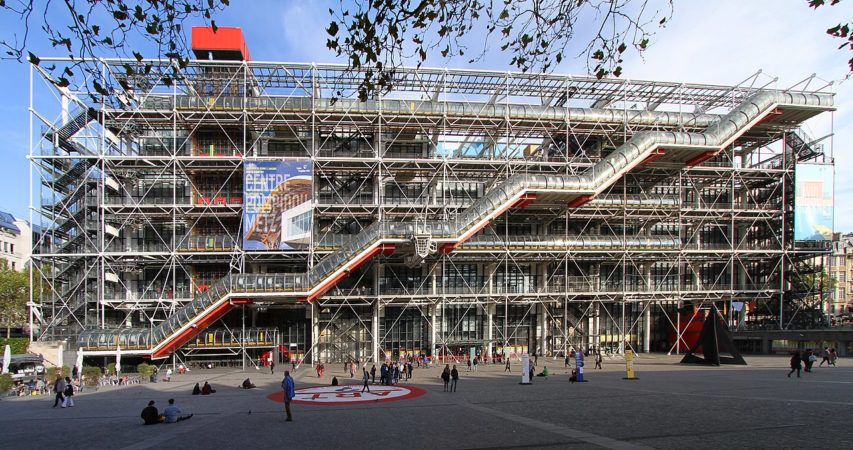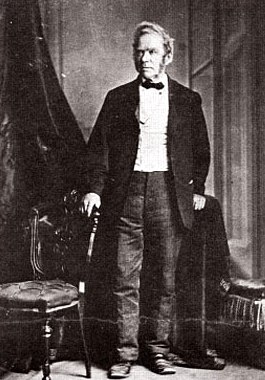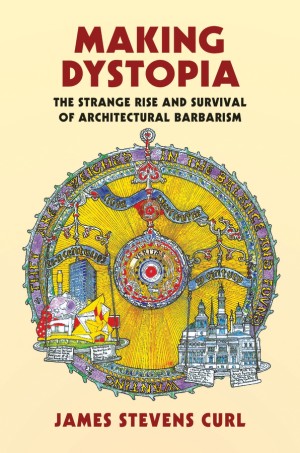Forgotten Weapons
Published on 27 Aug 2015http://www.patreon.com/ForgottenWeapons
Hammer price: $3,000
The Gyrojet was one of the more creative and one of the most futuristic firearms innovations of the last few decades – unfortunately it wasn’t able to prove sustainable on the market.
The idea was to use burning rocket fuel to launch projectiles, instead of pressurized gas. The advantage was that without the huge pressure of standard cartridges, a rocket-firing gun could be made far lighter and cheaper, as it had no need to contain pressure. The rockets would accelerate down the barrel as their fuel burned (and the 4 rocket jets would be angled to put a spin on the projectile for accuracy), and the weapon would actually have the most kinetic energy at something like 20 yards downrange, when the fuel was expended.
A decent number of Gyrojet handguns were made and sold (mostly as curiosities), but intrinsic accuracy problems prevented them from ever being taken seriously as weapons. The company behind the guns (MB Associates) went out of business shortly, unable to fully exploit their full range of ideas. One of those ideas was a carbine variant of the gun. A few hundred were made in two different models, and we have the chance today to take a look at one of the Mark 1 Model B sporter-style carbines.
July 4, 2019
Gyrojet Carbine, Mark 1 Model B
July 3, 2019
Tank Chats #51 TANKFEST 2017 | The Tank Museum
The Tank Museum
Published on 25 May 2018At TANKFEST 2017, the Musée des Blindés brought their unique Saint Chamond tank, which sat alongside the Museum’s replica Mark IV and A7V. David Fletcher took the opportunity to talk about the three First World War vehicles as they stood side-by-side.
Support the work of The Tank Museum on Patreon: ► https://www.patreon.com/tankmuseum
Or donate http://tankmuseum.org/support-us/donateVisit The Tank Museum SHOP: ►https://tankmuseumshop.org/
Twitter: ► https://twitter.com/TankMuseum
Tiger Tank Blog: ► http://blog.tiger-tank.com/
Tank 100 First World War Centenary Blog: ► http://tank100.com/ #tankmuseum #tanks
July 1, 2019
Very Early Mars Pistol #4
Forgotten Weapons
Published on 17 Apr 2015Sold for $46,000.
Until the midle of the 20th century, the most powerful automatic pistol made was Sir Hugh Gabbett-Fairfax’s Mars pistol. With the .45 caliber version approaching the energy of a .45 Winchester Magnum, it was quite the accomplishment for a gun designed initially in 1898! Well, RIA has a very early example of the Mars – serial number 4 – coming up for sale. This gun (chambered for the .360 Mars cartridge) has a number of features that differ from the more “typical” Mars pistols (all 80 or so that were ultimately made). These include a very long barrel, a tangent-style rear sight, and a 3-lug bolt instead of the standard 4-lug type. A very cool pistol to have a look at!
June 25, 2019
Mars Automatic Pistols
Forgotten Weapons
Published on 1 Mar 2015Sold for:
$74,750 (.45 cal example)
$40,250 (8.5mm example)The Mars pistol was designed by Sir Hugh Gabbett-Fairfax in England in 1898, and only 81 were produced by the time manufacturing ended in 1907. These pistols were chambered for several different cartridges, all of them tremendously powerful for the day (and really not equaled by another self-loading pistol until the Automag).
Cool Forgotten Weapons Merch! http://shop.bbtv.com/collections/forg…
Theme music by Dylan Benson – http://dbproductioncompany.webs.com
I first heard of these pistols in one of L. Neil Smith’s first SF novels, and they sounded so over-the-top that I assumed he’d made them up for the story. This is a fascinating piece of hand artillery that I’d be terrified to have pointed at me (but I’d probably be nearly as terrified to shoot).
June 22, 2019
Gyrojet Rocket Pistol
Forgotten Weapons
Published on 8 Sep 2014http://www.forgottenweapons.com
The Gyrojet was the closest thing to a commercially successful rocket pistol, although not many were sold before the company went out of business. This is the 13mm pistol version (the most common type of Gyrojet), and fires a 180 grain rocket projectile. It was for sale – with 15 rounds of live ammunition – at the Rock Island Premier Auction in September. Hammer price on it was $5500.
Theme music by Dylan Benson – http://dbproductioncompany.webs.com
June 14, 2019
How Streamlining Changed Trains Forever | Spark
Spark
Published on 25 Jun 2018Steam trains leapt forward in speed once Nigel Gresley decided to make them slick, sexy and streamlined.
In the 1930’s, Britain had a railway network that was envied around the world. The East and West Coast railway companies fought to transport passengers from London to Scotland in the shortest time possible.
Originally broadcast in 2003. Content licensed by DRG Distributions. Any queries, contact us at hello@littledotstudios.com
June 13, 2019
American anarchism
Not all anarchists are bomb-throwers, as Christopher Schwarz explains:
The idea of pairing anarchism and design work seems – on its face – to be a ridiculous marriage. After all, design is about creating things from scratch, and anarchism is about burning everything down, right?
Well, no. Anarchism – particularly the American flavor of it – is woefully simplified and misunderstood by people on both the left and the right of the political spectrum. The truth is that most of the furniture designers and graphic designers I’ve worked with in my career possess strong anarchistic tendencies. They just don’t know what to call their urges and beliefs.
I’ve been an aesthetic anarchist for more than 25 years, after first encountering the concept in graduate school (thanks Noam Chomsky), then observing one of my cousins, Jessamyn West, an anarchist librarian. There’s a chance you might be one, too. And while I’m certain that you probably should be working on something far more pressing and billable for work at McCorp, reading this short article isn’t going to hurt anything….
The face of American anarchism. Josiah Warren is considered the father of American anarchism. Among his many accomplishments was the founding of the Cincinnati Time Store, where you traded your labor for goods. No money.
Photo via Wikimedia Commons.The Briefest Description Ever of American Anarchism
America’s individualist anarchism is not about the violent overthrow of the government and its institutions. Period. Full stop. Instead, it is a tendency to eschew the enormous organizations – churches, states and corporations – that we have created during the last 250 years.
Why do this? While working with others is generally a good thing, there is some threshold upon which an organization becomes so large that it is capable of inhumane behavior – war, slavery, environmental destruction, mass extinctions or even just failing to treat its employees and contractors fairly. These are things that individuals are (mostly) incapable of accomplishing.
Anarchists like myself avoid working with these massive and dehumanizing institutions. I don’t want to burn them down, but I also don’t want to prop them up by shopping in their stores, praying in their cathedrals or voting in their elections.
That doesn’t mean I’m opposed to making money, that I’m an atheist or that I’m uninvolved in my community. I just decline to work, pray and serve others via these institutions. Working with them gives them power, while working with the family architectural firm a few blocks away helps your neighbors in every way imaginable.
May 30, 2019
Tank Chats #47 King Tiger | The Tank Museum
The Tank Museum
Published on 2 Mar 2018Known variously as the Tiger Ausf. B, Tiger II or Königstiger (the British also referred to it as the “Royal Tiger”), 489 Tiger IIs, were produced at the Henschel assembly plant, between January 1944 and March 1945. However, despite lacking in numbers, and being prone to mechanical and mobility issues based on its size and weight, the Tiger II’s combination of devastating firepower, and thick sloped armour plate made it a formidable adversary.
Support the work of The Tank Museum on Patreon: ► https://www.patreon.com/tankmuseum
Or donate http://tankmuseum.org/support-us/donateVisit The Tank Museum SHOP: ►https://tankmuseumshop.org/
Twitter: ► https://twitter.com/TankMuseum
Tiger Tank Blog: ► http://blog.tiger-tank.com/
Tank 100 First World War Centenary Blog: ► http://tank100.com/ #tankmuseum #tanks #tigertank
May 21, 2019
Armoured Vehicles of the Invasion of France 1940, by The Chieftain – WW2 Special
World War Two
Published on 20 May 2019The Chieftain takes you on an extensive walkthrough of the armoured vehicles used by both sides during the German invasion of France in 1940.
The Chieftain’s channel: https://www.youtube.com/user/TheChief…
May 20, 2019
The Evolution Of Knightly Armour – 1066 – 1485
Metatron
Published on 16 May 2017A video full of details which took over 30 hours in the making. I hope you like it and you find the info in it useful 😀
Armour (spelled armor in the US) is a protective covering that is used to prevent damage from being inflicted to an object, individual, or vehicle by weapons or projectiles, usually during combat, or from damage caused by a potentially dangerous environment or action. The word “armour” began to appear in the Middle Ages as a derivative of Old French. It is dated from 1297 as a “mail, defensive covering worn in combat”. The word originates from the Old French armure, itself derived from the Latin armatura meaning “arms and/or equipment”, with the root armare meaning “arms or gear”.
Armour has been used throughout recorded history. It has been made from a variety of materials, beginning with rudimentary leather protection and evolving through mail and metal plate into today’s modern composites.
Significant factors in the development of armour include the economic and technological necessities of its production. For instance, plate armour first appeared in Medieval Europe when water-powered trip hammers made the formation of plates faster and cheaper.Well-known armour types in European history include the lorica hamata, lorica squamata, and lorica segmentata of the Roman legions, the mail hauberk of the early medieval age, and the full steel plate harness worn by later medieval and renaissance knights, and breast and back plates worn by heavy cavalry in several European countries until the first year of World War I (1914–15). The samurai warriors of feudal Japan utilised many types of armour for hundreds of years up to the 19th century.
Plate armour became cheaper than mail by the 15th century as it required less labour, labour that had become more expensive after the Black Death, though it did require larger furnaces to produce larger blooms. Mail continued to be used to protect those joints which could not be adequately protected by plate.
The small skull cap evolved into a bigger helmet, the bascinet. Several new forms of fully enclosed helmets were introduced in the late 14th century.By about 1400 the full plate armour had been developed in armouries of Lombardy. Heavy cavalry dominated the battlefield for centuries in part because of their armour.
Probably the most recognised style of armour in the World became the plate armour associated with the knights of the European Late Middle Ages.
May 15, 2019
Modern architecture as a generations-long art crime spree
Theodore Dalrymple is clearly quite a fan of Making Dystopia: The Strange Rise and Survival of Architectural Barbarism by James Stevens Curl, as this is at least the third review of the book I’ve seen by him (and you can probably tell I agree with much of his viewpoint that I’m blogging it yet again…)
In a recent debate in Prospect magazine on the question of whether modern architecture has ruined British towns and cities, Professor James Stevens Curl, one of Britain’s most distinguished architectural historians, wrote as his opening salvo:
Visitors to these islands who have eyes to see will observe that there is hardly a town or city that has not had its streets — and skyline — wrecked by insensitive, crude, post-1945 additions which ignore established geometries, urban grain, scale, materials, and emphases.
This is so self-evidently true that I find it hard to understand how anyone could deny it, but modern architects and hangers-on such as architectural journalists do deny it, like war criminals who, for obvious reasons, continue to deny their crimes in the face of overwhelming evidence.
This is true not only of Britain but of many, perhaps most, other countries that have or had any towns or cities to ruin. Anyone who rides into the center of Paris from Charles de Gaulle Airport, for example, will be appalled at the modernist visual hell that scours his eyes as he goes.
Nor is this visual hell the consequence of the need to build cheaply. Where money is no object, contemporary architects, like the sleep of reason in Goya’s etching, bring forth monsters. The Tour Montparnasse (said to be the most hated building in Paris), the Centre Pompidou, the Opéra Bastille, the Musée du quai Branly, the new Philharmonie, do not owe their preternatural ugliness to lack of funds, but rather to the incapacity, one might say the ferocious unwillingness, of architects to build anything beautiful, and to their determination to leave their mark on the city as a dog leaves its mark on a tree.
Professor Curl’s magnum opus is both scholarly and polemical. He has been observing the onward march of modernism and its effects for sixty years and is justifiably outraged by it. British architects have managed to reverse the terms of the anarchist Bakunin’s dictum that the urge to destroy is also a creative urge: Their urge to create is also a destructive urge. I could give many concrete examples (no pun intended).
Curl knows that he is arguing not against an aesthetic, but against an ironclad ideology. The architectural Leninists have been determined so to indoctrinate the public that they hope and expect a generation will grow up knowing nothing but modernism, and therefore will be unable to judge it. (All judgment is comparative, as Doctor Johnson said.) In Paris recently, I saw an advertisement on the Métro (a few days before the fire in Notre-Dame) to the effect that Paris would not be Paris without the Centre Pompidou — which, of course, has a good claim to be the ugliest building in the world. In the face of such an advertisement promoted by the cultural elite, what ordinary person would dare demur?

Centre Georges-Pompidou (no, this isn’t an under construction image … it’s from 2017 and the construction was technically complete in 1977)
Gerd Eichmann photo via Wikimedia Commons.
Could anyone imagine a worldwide outpouring of genuine and heartfelt grief, such as that which greeted the burning of Notre-Dame de Paris, if any building of the last seventy years burnt down? Indeed, the destruction of many would be a cause almost for rejoicing. Modernist buildings will never age as Notre-Dame aged; they will merely deteriorate, and usually do deteriorate even before completion.
April 3, 2019
Tank Chats #45 Major General Sir Percy Hobart | The Funnies | The Tank Museum
The Tank Museum
Published on 10 Feb 2018Welcome to the first in the Tank Chat Funnies mini-series!
In Tank Chats #45 David begins a series on one of his personal interests, the Funnies of the 79th Armoured Division. However the 79th and its Funnies would have been nothing without its inspirational leader Major General Percy Hobart, so David starts with the man and we promise will follow very shortly with his machines.
Support the work of The Tank Museum on Patreon: ► https://www.patreon.com/tankmuseum
Or donate http://tankmuseum.org/support-us/donateVisit The Tank Museum SHOP: ►https://tankmuseumshop.org/
Press the little bell above to enable NOTIFICATIONS so you don’t miss the latest Tank Museum videos.
Twitter: ► https://twitter.com/TankMuseum
Tiger Tank Blog: ► http://blog.tiger-tank.com/
Tank 100 First World War Centenary Blog: ► http://tank100.com/ #tankmuseum #tanks
March 24, 2019
Major Fosbery’s Automatic Revolver: History and Mechanics
Forgotten Weapons
Published on 9 Aug 2017http://www.patreon.com/ForgottenWeapons
George Fosbery, V.C., was a decorated British officer with substantial combat experience in India when he decided to design a better sidearm in 1895. True semiautomatic handguns were in their very early stages of development at that time, and Fosbery thought that one could have a more durable, more powerful, and simpler weapon by using a revolver as a foundation. He began experimenting with a Colt SAA, but soon moved to using Webley revolvers when he found the Colt internals insufficiently durable for his conversion.
What Fosbery did was to relocate the barrel and cylinder into an upper assembly which could move independently of the grip and trigger of the gun. Upon firing, the energy of recoil would push the upper assembly rearwards, re-cocking the hammer and indexing the cylinder to the next chamber. This gave the shooter the rapid fire of a double action revolver with the excellent trigger pull of a single action revolver.
The gun was introduced at the Bisley shooting matches, where it proved quite popular as a target gun. By the time production began in the early years of the 20th century, however, semi-auto handguns had improved significantly, and the opportunity for the Webley-Fosbery to be a big seller had already passed. Still, British officers were required to provide sidearms chambered for the .455 service cartridge, and more than a few opted to purchase Webley-Fosberys.
Thanks to Mike Carrick of Arms Heritage magazine for providing this Webley-Fosbery for this video! See his regular column here: https://armsheritagemagazine.com
If you enjoy Forgotten Weapons, check out its sister channel, InRangeTV! http://www.youtube.com/InRangeTVShow
March 11, 2019
How Does It Work: Patents and Blueprints
Forgotten Weapons
Published on 10 Feb 2019http://www.patreon.com/ForgottenWeapons
Cool Forgotten Weapons merch! http://shop.bbtv.com/collections/forg…
What is the difference between patents and copyrights? If someone wants to reproduce an old firearm design, how do they get the rights to? Why can’t you reproduce a gun design from patent drawings? What information is in a technical data package? This and more, today on How Does It Work!
Contact:
Forgotten Weapons
PO Box 87647
Tucson, AZ 85754
March 6, 2019
How Does it Work: Long Recoil
Forgotten Weapons
Published on 7 Feb 2019http://www.patreon.com/ForgottenWeapons
Cool Forgotten Weapons merch! http://shop.bbtv.com/collections/forg…
Long recoil operation is one of the most mechanically interesting of the main firearm operating systems. When the gun fires, the recoil energy generated forces the barrel to move rearward, and the bolt remains locked into the barrel until the two reach the full length of travel (the length of the whole cartridge). At that point the bolt is held rearward and the barrel unlocks and moves forward under pressure from a return spring. The empty cartridge case is held in the bolt face, and the barrel pulls forward off the front of it. An ejector kicks the empty case out when the barrel is fully clear, and when the barrel has returned to its firing position a trip releases the bolt, which moves forward under pressure of a second return spring and feeds the next cartridge into the chamber.
Long recoil system are very safe, as they allow the longest time of any system to let pressure vent from the barrel before unlocking. They are also mechanically complex, and tend to exhibit higher than normal felt recoil. The system was employed successfully in a wide variety of firearms including light machine guns (the Chauchat), rifles (the Remington Model 8/81), shotguns (the Browning Auto-5 and Winchester Model 1911), and handguns (the Former Stop). All of these date from the early 1900s, when designers were still exploring ways to safely and reliably build self-loading firearms.
Contact:
Forgotten Weapons
PO Box 87647
Tucson, AZ 85754












